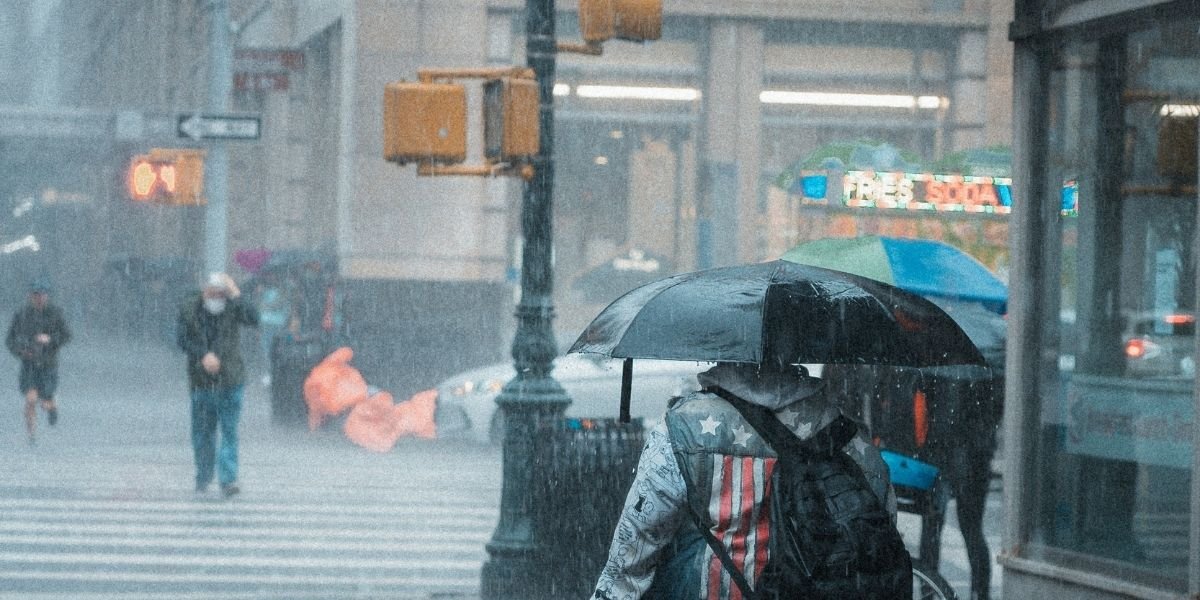New York City, a global hub known for its iconic skyline, bustling streets, and cultural diversity, is facing a rising environmental threat: flooding. While the city is no stranger to heavy rainfall and occasional flooding, recent data and extreme weather patterns are raising alarm bells about the increasing flood risk. With climate change intensifying the frequency and severity of storms, New Yorkers are beginning to feel the effects in ways they’ve never experienced before.
In this article, we explore why New York City’s flood risk is growing, how it could impact residents and businesses, and what steps the city is taking to prepare for a wetter future.
The Growing Threat of Flooding in NYC
Historically, New York City has been built on its resilience. From recovering after the 9/11 attacks to rebuilding after Superstorm Sandy, the city has always bounced back. However, the threats posed by climate change, especially rising sea levels and heavier rainfall, are unlike anything the city has dealt with before.
New York City is one of the most vulnerable metropolitan areas in the United States when it comes to flooding. It sits on a coastline surrounded by rivers, bays, and the Atlantic Ocean, making it prone to both coastal and inland flooding. Rising sea levels are expected to add to the flood risk, pushing storm surges deeper into the city’s streets during major storms.
The most noticeable indicator of this growing risk is the frequency of “100-year storms”—events once considered rare that now seem to happen every few years. In 2021, for example, remnants of Hurricane Ida caused massive flooding across New York City, killing dozens and overwhelming the city’s infrastructure. Streets, subways, and homes in previously safe areas were inundated, sparking concerns about the city’s preparedness for more frequent and intense weather events.
What’s Behind NYC’s Increasing Flood Risk?
The main factors contributing to the growing flood risk in New York City are rising sea levels, climate change, and outdated infrastructure.
Rising Sea Levels
Sea levels around New York City have been rising at an alarming rate, driven largely by climate change. According to the U.S. National Oceanic and Atmospheric Administration (NOAA), sea levels around the city have risen by about 1 foot over the past century, with projections suggesting an additional 1 to 2 feet of rise by 2050. This creates a greater chance of storm surges, which can flood the city’s coastal and low-lying areas. The effects of this can be seen in lower Manhattan, parts of Brooklyn, and the Rockaways, which are increasingly at risk during high tides and storm events.
Increased Rainfall and Storm Intensity
Warmer temperatures lead to more intense rainfall events, especially in urban areas where the “urban heat island” effect makes the city warmer than its rural surroundings. Studies show that the Northeast is seeing more heavy precipitation events than in the past, with rainfalls in some areas increasing by as much as 70% over the last few decades. This trend is expected to continue, making flash floods more common in areas like Queens, the Bronx, and Staten Island. The infrastructure in these neighborhoods is often outdated, with stormwater systems unable to handle the volume of water produced by these extreme weather events.
Aging Infrastructure
New York City’s infrastructure was built to handle storms and flooding at levels that are no longer realistic in today’s climate. Stormwater systems, sewer systems, and protective measures like sea walls were designed in the early to mid-20th century, before climate change and urban expansion transformed the landscape. The city’s drainage systems, which were once sufficient, are now overburdened by the heavy rains that have become a regular feature of life in the city. In fact, a significant portion of New York’s underground stormwater system is more than a century old and desperately needs updating to handle increased rainfall and rising seas.
Flooding’s Impact on NYC’s Economy and Residents
The consequences of New York City’s growing flood risk are far-reaching, affecting not only the physical infrastructure but also the city’s economy and daily life.
Economic Strain
Flooding events cause immense damage to both homes and businesses. For the economy, this means potential disruptions in the flow of commerce, as companies face damages to property, lost working hours, and the costs of rebuilding. For residents, flooding can lead to significant financial strain, especially for those living in vulnerable, low-income areas where homes are not built to withstand extreme weather conditions.

Tourism, a major pillar of NYC’s economy, can also suffer during periods of extreme weather. Flooding can prevent visitors from exploring iconic landmarks, shutting down Broadway shows, and making it difficult for people to get to restaurants, shops, and cultural events.
Health and Safety Concerns
Health risks associated with flooding are another serious concern. Standing water can lead to waterborne diseases, mold growth in buildings, and the spread of bacteria. Flooded subways, roadways, and buildings can also result in hazardous conditions, making it harder for emergency services to respond in a timely manner. For residents, these floods are a constant reminder of the vulnerability that comes with living in a coastal city.
What Is NYC Doing to Tackle the Growing Flood Risk?
In response to these challenges, New York City has begun to implement several ambitious flood protection strategies aimed at mitigating the impact of future storms and rising sea levels.
The NYC Climate Adaptation Plan
The city’s climate adaptation plan focuses on both reducing carbon emissions and improving the city’s infrastructure to withstand the inevitable changes in weather patterns. New York City is investing in upgrading its stormwater management system, reinforcing the city’s coastline with storm barriers, and increasing green spaces to absorb excess water. The city is also redesigning its buildings and public spaces to be more resilient in the face of flooding.
Storm Surge Barriers and Seawalls
One of the most significant projects underway is the creation of storm surge barriers around vulnerable parts of the city, including lower Manhattan and the Brooklyn waterfront. These barriers are designed to reduce the risk of storm surges inundating the city during extreme weather events. Alongside these protective measures, efforts are being made to restore and reinforce natural coastal ecosystems, such as wetlands, which can help absorb floodwaters and provide a natural buffer against storms.
Community Education and Preparedness
The city is also focused on raising awareness and educating residents about flood risks and the necessary preparations. Programs aimed at improving emergency preparedness, including evacuation plans and flood insurance coverage, are increasingly important as climate change continues to alter the landscape of flooding in New York.
Looking Ahead: A Flood-Resilient Future for NYC?
While the future of New York City’s flood risk may seem daunting, the city’s ongoing efforts to adapt and protect its residents show promise. By strengthening its infrastructure, investing in green solutions, and preparing for the challenges of rising sea levels, New York can continue to thrive as one of the most dynamic cities in the world—even in the face of a changing climate.









